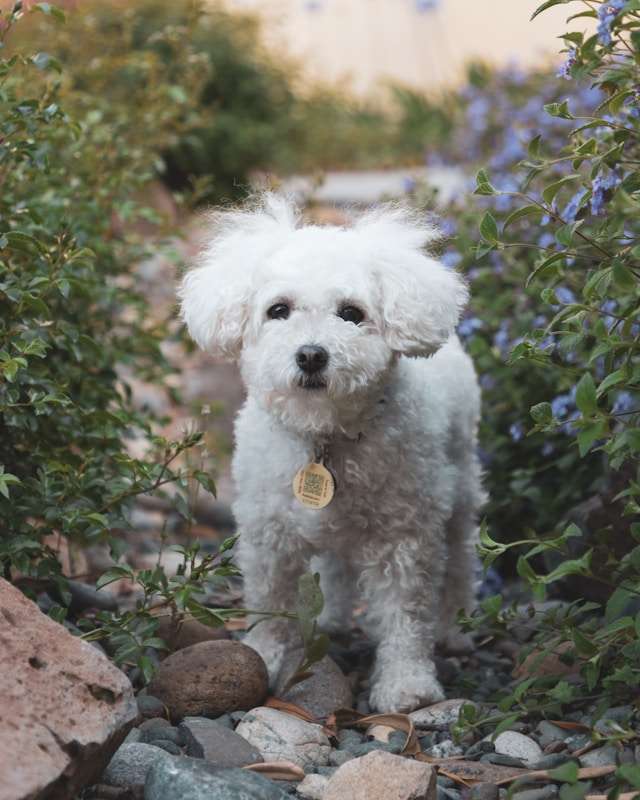Unveiling the Newfoundland Dog Breed Personality: Traits and Temperament

Unveiling the Newfoundland Dog Breed Personality: Traits and Temperament. Picture a 150-pound dog that’s gentle enough to be called a “nanny” for children. The sort of thing I love is this fantastic contrast in the Newfoundland dog breed personality.
These gentle giants stand out as one of the most intriguing breeds I’ve discovered through my years of dog research. Often affectionately called “Newfies,” these dogs have earned their reputation as perfect family companions.
The Newfoundland breed’s remarkable intelligence combines naturally with nurturing instincts, distinguishing it from other large breeds. Its sweet temperament and affectionate nature make it ideal for families seeking a loyal and loving pet.
This piece explores the distinctive characteristics that define these magnificent dogs. You’ll discover everything about their working breed heritage and ability to integrate into families. The Newfoundland’s personality truly stands apart in the dog world, showcasing strength, gentleness, and unwavering devotion.
Table of Contents
The Heritage Impact on Temperament
The roots of Newfoundland dog personality reveal how their heritage as working dogs has shaped their character. These magnificent dogs emerged from a rich maritime history that developed through careful breeding between indigenous Canadian dogs and European working breeds [1].
Working breed instincts
The Newfoundland’s working heritage runs deep in their DNA. These dogs were bred at the time to assist fishermen and showed remarkable strength as they hauled nets and carried supplies [2]. Their robust build and heavy bone structure make them stand 26 to 28 inches tall and weigh between 100 to 150 pounds [3]. This size made them perfect candidates for their historical roles as draft animals, showcasing their capabilities as a multipurpose working dog.
Water rescue traits influence
These dogs stand apart because of their extraordinary connection to water rescue work. Their physical adaptations tell a fantastic story:
- Water-resistant double coat for cold water protection
- Webbed feet for efficient swimming
- Large lung capacity for extended water work
- Powerful hindquarters for swimming strength [3]
I love that these traits aren’t just physical—they’ve become deeply embedded in their personality. These dogs show an instinctive drive to protect the waterfront and rescue people in distress [4]. Their prowess as rescuers has earned them the nickname “Saint Bernard of the water” in North Atlantic rescues [4]. This adaptability to land and water makes the Newfoundland breed truly versatile.
Historical personality development
The rise of Newfoundland’s temperament mirrors the needs of its original community. Their work among fishermen in harsh conditions required strength, intelligence, and a cooperative nature. Their role needed hardworking dogs yet gentle enough to work closely with humans [4].
Their historical roles have fostered a unique combination of traits. These dogs developed what experts call a “natural life-saving instinct” on land and water [5]. Their intelligence and eagerness to please come directly from generations working with humans in life-or-death situations [6].
Modern Newfoundlands might not actively work in maritime rescue, but their heritage deeply shapes their personality. They keep their gentle demeanor while carrying the courage and capability that made them legendary water rescue dogs [1].
Core Personality Characteristics
My studies of dog breeds over the last several years have shown that Newfoundland dogs have remarkable core personality traits. These gentle giants blend unique characteristics that make them exceptional companions, showcasing the true essence of the Newfoundland temperament.
Patience and gentleness analysis
The hallmark of the Newfoundland’s personality is its extraordinary gentleness. The breed’s “sweetness of temperament” [2] stands out consistently in my observations. Their patience with children amazes me, which explains their “nanny dog” reputation [3].
Their gentle nature shows up in several ways:
- They tolerate children and other pets exceptionally well
- A calm demeanor stays constant in most situations
- Natural protective instincts emerge without aggression
- Patient interactions come naturally with family members
Loyalty and devotion traits
Newfoundlands build powerful bonds with their families. These dogs feel happiest at their owner’s side [7], and their devotion runs deep. I love their ability to connect strongly with the whole family, not just one person [8].
Their steadfast dedication and protective instincts prove their loyalty. But this deep bonding needs careful thought – they struggle a lot if rehomed and often face depression while adapting to new environments [8].
Independence vs. dependence balance
The balanced nature of Newfoundland’s personality fascinates me most. These dogs work independently [9] but still need human companionship. They display what I call “thoughtful independence”—making their own decisions while wanting their family involved in activities.
Their intelligent yet occasionally stubborn nature stands out. Training comes easily, but they see themselves as equals [9]. Positive, reward-based training works better than force. Smart enough to understand commands, they’re independent enough to choose whether to follow them [7].
This balance makes them perfect for families who want a companion and an independent thinker. However, potential owners should know that these dogs struggle when left alone for too long. They might develop separation anxiety or destructive behaviors [7].
Family Integration Abilities
My years of experience with different dog breeds have taught me something amazing – Newfoundlands blend naturally into family life. These dogs know how to adapt to family dynamics better than many other large breeds I’ve worked with, making them excellent family companions.
Child interaction patterns
Newfoundlands show exceptional patience with children. They’ve earned their “nanny dog” reputation because of their gentle and forgiving nature [10]. These dogs stay incredibly tolerant of children’s behavior while remaining aware of their size. This self-awareness plays a significant role since these gentle giants need extra care around more minor children [11].
Families should never forget the need for supervision. These dogs may be gentle, but their size means someone should watch their interactions with young children [10]. Early socialization and training help ensure safe play between Newfoundlands and children.
Role as a family guardian
Newfoundlands have a unique protective style that differentiates them from typical guard dogs. Their protective instincts show up in several ways:
- They position themselves between family members and perceived threats
- They monitor doorways and halls, especially near children
- They use gentle diversionary tactics, like bringing toys to diffuse tense situations
- They stay alert to their surroundings [12]
I love their sixth sense, especially regarding children’s safety [12]. Rather than showing aggression, they use their impressive size and natural instincts to guide family members away from danger [13]. This answers the question, “Are Newfoundlands protective?” with a resounding yes, but in their own gentle way.
Adapting to family dynamics
Newfoundlands show remarkable flexibility in various family situations. They handle everything well – from busy family rooms to persistent cats seeking friendship [14]. Their ability to stay engaged yet calm during family activities never fails to impress me.
These dogs display exceptional social intelligence. They learn family routines quickly and adjust their behavior naturally. You’ll find them napping while life moves around them, yet they stay observant and ready to join in when needed [14]. This mix of independence and involvement makes them perfect for active family environments.
Communication and Expression
My study of Newfoundland dogs led me to discover how these gentle giants communicate. Their expressive nature tells us so much about their personality and emotions, showcasing their friendly behavior.
Body language signals
Newfoundlands use expressive body language with many physical cues to show their feelings [15]. Their tail positions tell quite a story – a high tail with quick wagging means they’re excited and happy, while a low tail suggests they’re anxious or unsure [16].
These are the main body language signals I’ve seen:
- Raised shoulders and head: showing confidence
- Lowered body stance: showing submission
- Play bow: inviting interaction
- Gentle cleaning: showing affection and trust [16]
I love how they change their posture based on who they’re with, whether it’s children or new people [17].
Vocal communication patterns
Newfoundlands don’t bark much, but they use sound in amazing ways. Their deep, distinctive bark means different things [16]. They make specific sounds to tell you what they need—from soft, happy grunts to clear warning barks that alert their family [16].
I’ve named their friendly, low sounds “conversational growls.” These sounds aren’t scary at all – they just show the dog wants to be part of what the family is doing [17].
Emotional expression methods
These dogs are experts at showing emotions through physical contact. They use what I call “intentional proximity” – they think about where to place themselves near people they love [18]. This isn’t random behavior – it shows how they feel and who they’re attached to.
They’re also great at understanding human emotions. You can see this when they move their faces more as people pay attention to them [17]. They’re so bright that they can read human facial expressions and adjust their actions based on their owner’s mood [17].
Newfoundlands understand human communication well. They react differently to voice tones and body language [18]. They’ll gently put their paw on you or tilt their head to start an interaction, showing they know how to communicate with their human family.
Behavioral Challenges and Solutions
My years working with Newfoundland dogs have taught me that knowing their behavioral challenges helps preserve their wonderful personality traits. These gentle giants are naturally sweet but face unique challenges that need our attention and patience.
Common personality-related issues
My interactions with Newfoundland owners show that most behavioral issues occur during adolescence [19]. These challenges come from their unique breed characteristics and can include:
- Excessive mouthing and jumping behaviors
- Testing boundaries during teenage years
- Difficulty guadgeing their size
- Overexcitement during play sessions
- Stubborn streaks during training
I love that these dogs’ behaviors usually peak in their second year [19]. The good news is that most Newfoundlands show great improvement by their third year with consistent training and understanding [19].
Addressing separation anxiety
Separation anxiety is one of the biggest problems for Newfoundland dogs. These social creatures get upset when left alone, often leading to destructive behaviors like chewing floors, baseboards, and furniture [19].
These proven solutions have worked well for me:
- Gradual departure training using high-value treats
- Creating a calm environment with soothing background noise
- Providing mental stimulation through puzzle toys
- Establishing a consistent routine
- Using unique toys reserved for alone time [20]
You should know that harsh punishment never works with these sensitive dogs [19]. I always suggest positive reinforcement techniques to build their confidence and independence.
Managing size-related behaviors
Newfoundland dogs’ personalities have everything to do with understanding their size. Many Newfoundlands don’t naturally recognize how big they are, which leads to amusing but potentially tricky situations [21].
My training sessions focus on early socialization and consistent guidance. These dogs need to learn good behavior while they’re still manageable in size [21]. Once they understand what you want, they adapt their behavior quickly— they respond beautifully to gentle, consistent training [22].
Clear boundaries early on make all the difference with size-related behaviors. This means teaching them not to jump on furniture or people, keeping greetings calm, and understanding their strength during leash walks [20]. We don’t want to suppress their loving nature – channel it correctly.
Conclusion
Let’s examine Newfoundland dog personality to understand why these gentle giants stand out among all dog breeds. Their strength and tenderness, shaped by their maritime heritage, make them extraordinary family companions.
These intelligent dogs become outstanding family members because they are patient with children and have natural protective instincts. They respond well to consistent, positive training approaches despite challenges with their size and separation anxiety.
Newfoundlands’ emotional intelligence and communication skills amaze me. They precisely read their family’s needs and offer comfort through subtle yet meaningful gestures. These dogs create lasting relationships by balancing independence with strong family bonds.
A Newfoundland’s care requires understanding and dedication, but the benefits are nowhere near the challenges. These magnificent dogs show that gentle strength and steadfast dedication can exist in surprisingly large packages. With a life expectancy ranging from 8 to 10 years, also known as the Newfie lifespan, they provide years of loyal companionship to their families.
FAQs
Q1. What are the key personality traits of Newfoundland dogs? Newfoundland dogs are known for their exceptionally gentle and sweet nature. They are patient, loyal, and intelligent, with a natural protective instinct towards their family members, especially children. Their calm demeanor and ability to adapt to family dynamics make them excellent companions.
Q2. How much exercise do Newfoundland dogs require? While Newfoundlands are generally calm, they still need regular exercise to maintain their health. Daily walks and occasional swimming sessions are ideal. However, their exercise needs are moderate compared to other large breeds, making them suitable for families with a less active lifestyle.
Q3. Are Newfoundland dogs vocal? Newfoundlands can be vocal, but they’re not known for excessive barking. They use a variety of vocalizations to communicate, including deep barks for alerting and gentler sounds for expressing contentment. Their barking is usually purposeful rather than constant.
Q4. Do Newfoundland dogs enjoy cuddling? Newfoundland dogs are often very affectionate and enjoy cuddling with their family members. They show affection through physical closeness, frequently leaning against their owners or gently touching them. Their love for human companionship makes them excellent cuddle partners.
Q5. What are some common behavioral challenges with Newfoundland dogs? Common challenges include managing their large size, addressing potential separation anxiety, and guiding them through their adolescent phase. They may exhibit behaviors like excessive mouthing or jumping, especially when young. Consistent, positive training and early socialization are key to addressing these issues.
References
[1] – https://iheartdogs.com/the-history-and-origin-of-the-newfoundland-a-comprehensive-look/ [2] – https://lovenewfoundlands.com/about-the-newfoundland-dog/ [3] – https://www.britannica.com/animal/Newfoundland-dog [4] – https://www.akc.org/expert-advice/dog-breeds/newfoundland-breed-history-north-americas-water-rescue-dog/ [5] – https://mybrownnewfies.com/2019/12/05/the-newfoundland-as-a-working-dog/ [6] – https://www.thenewfoundland.org/morris.html [7] – https://mybrownnewfies.com/2020/04/14/embrace-these-8-traits-or-dont-get-a-newfoundland/ [8] – https://www.bernerbabies.com/newfiepersonalities [9] – https://www.gentle-newfoundland-dogs.com/newfoundland-training.html [10] – https://www.momswhothink.com/are-newfoundlands-good-with-kids-what-parents-need-to-know/ [11] – https://www.myfamilyvets.co.uk/newfoundland-breed-guide [12] – https://mybrownnewfies.com/2019/11/06/do-newfoundlands-make-good-guard-dogs/ [13] – https://www.dogster.com/lifestyle/how-protective-are-newfoundland-dogs [14] – https://www.dailypaws.com/dogs-puppies/dog-breeds/newfoundland [15] – https://www.akc.org/expert-advice/dog-breeding/dog-body-language/ [16] – https://www.youtube.com/watch?v=2gAFOMs8RH0 [17] – https://pmc.ncbi.nlm.nih.gov/articles/PMC6116041/ [18] – https://iheartdogs.com/the-love-languages-of-newfoundlands/ [19] – https://mybrownnewfies.com/2018/08/16/10-common-behavior-issues-seen-with-the-newfoundland-dog/ [20] – https://nationalnewfoundlandrescue.com/welcoming-a-new-dog/ [21] – https://www.akc.org/expert-advice/dog-breeds/how-to-train-a-newfoundland-puppy/ [22] – https://www.petmd.com/dog/breeds/newfoundland







3 Comments